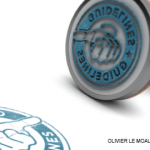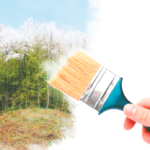It also meets patients on common cultural ground. Many patients, especially those from traditions that value such symbolic acts, intuitively understand what I mean when I knock. In the right context, it tells them, “I hope this continues,” without pretending to guarantee it. It invites hope without hubris. It shows that I, too, live in a world where the future is completely unknown and that I am willing to be flexible when it comes to my own beliefs.
Knocking on wood also serves to educate patients about something deeper within the philosophy of science. Although we often think of uncertainty as a failure of science, it can be just as much a foundation for connection because patients and clinicians co-inhabit that vulnerable space of uncertainty. By becoming allies in this uncertain space, we humanize ourselves as scientists and clinicians.
The Power of Belief in a Polarized Age
So where does all of this bring us? Needless to say, we live in a very strange time. Beliefs are hardening in ways that we could not have imagined even a decade ago. Faith, myth and medicine sometimes feel like they are at odds. In this context, it is tempting to look down upon others for the strong beliefs they hold—especially when they conflict with our own evidence-based frameworks.
But perhaps we would do better to begin from a place of mutual respect. Not all myths are wrong, and even myths that appear wrong to us may carry values and significance that we can acknowledge. After all, myths, superstitions and rituals speak to emotional, spiritual and communal realities that our data cannot always capture.7 When we listen for those stories, we honor the symbolic alongside the statistical and become better clinicians, scientists and, ultimately, humans.
Superstition, in this sense, is not the opposite of science. It is a complement and a vital method of situating science within the broader context of lived experience. When I knock on wood—a superstition imported to Midwest America from Northern Europe and one that nobody in my family shares— it means, in a very concise way, that I am willing to reach patients on their own ground.
Conclusion: A Knock, A Gesture, A Truth
When my patient pointed out that I had knocked on a piece of plastic shelving, not actual wood, I smiled, but I didn’t correct course. In that moment, it didn’t matter what the material was. It was the gesture that truly mattered. It was a shared recognition that, in a world guided by evidence, there are still forces we don’t fully understand and that even when we roughly understand them, we prefer to live in a more poetic, story-driven world.


